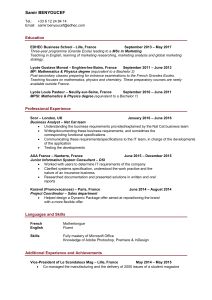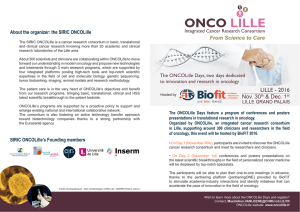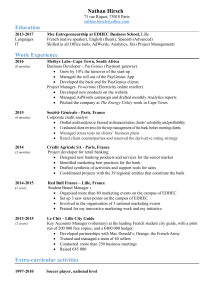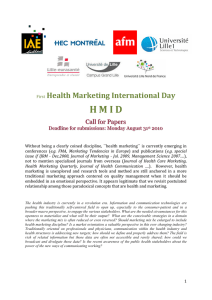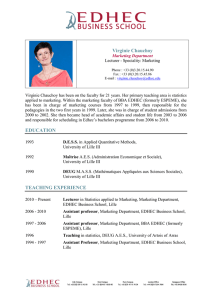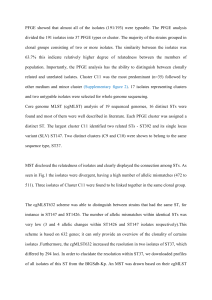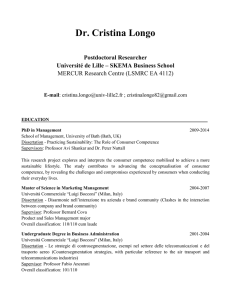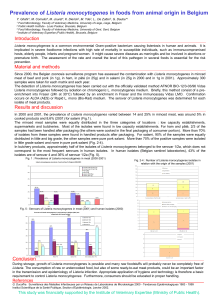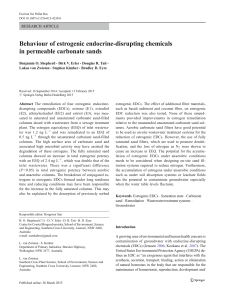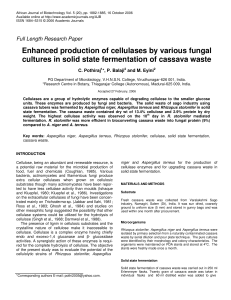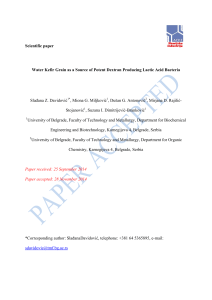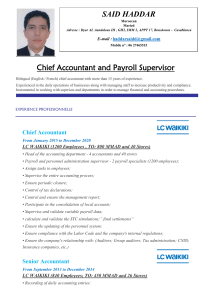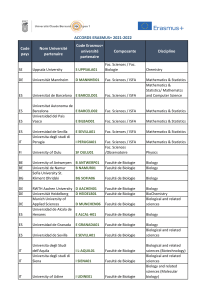O084 Oral Session Emerging resistance in fungi
publicité
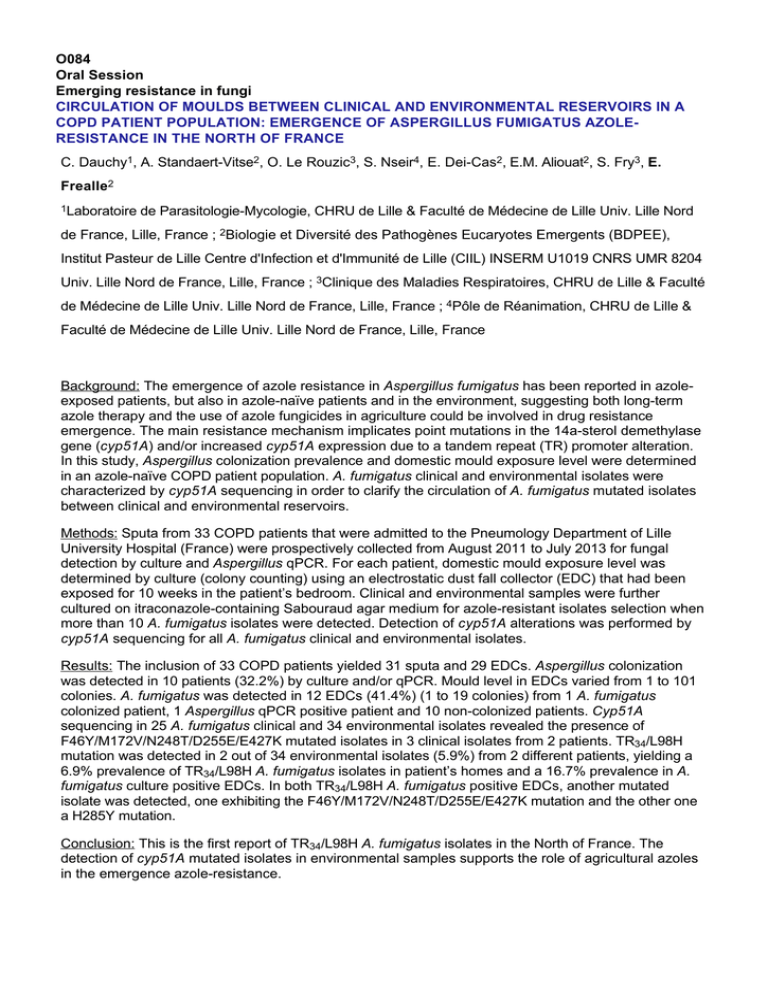
O084 Oral Session Emerging resistance in fungi CIRCULATION OF MOULDS BETWEEN CLINICAL AND ENVIRONMENTAL RESERVOIRS IN A COPD PATIENT POPULATION: EMERGENCE OF ASPERGILLUS FUMIGATUS AZOLERESISTANCE IN THE NORTH OF FRANCE C. Dauchy1, A. Standaert-Vitse2, O. Le Rouzic3, S. Nseir4, E. Dei-Cas2, E.M. Aliouat2, S. Fry3, E. Frealle2 1Laboratoire de Parasitologie-Mycologie, CHRU de Lille & Faculté de Médecine de Lille Univ. Lille Nord de France, Lille, France ; 2Biologie et Diversité des Pathogènes Eucaryotes Emergents (BDPEE), Institut Pasteur de Lille Centre d'Infection et d'Immunité de Lille (CIIL) INSERM U1019 CNRS UMR 8204 Univ. Lille Nord de France, Lille, France ; 3Clinique des Maladies Respiratoires, CHRU de Lille & Faculté de Médecine de Lille Univ. Lille Nord de France, Lille, France ; 4Pôle de Réanimation, CHRU de Lille & Faculté de Médecine de Lille Univ. Lille Nord de France, Lille, France Background: The emergence of azole resistance in Aspergillus fumigatus has been reported in azoleexposed patients, but also in azole-naïve patients and in the environment, suggesting both long-term azole therapy and the use of azole fungicides in agriculture could be involved in drug resistance emergence. The main resistance mechanism implicates point mutations in the 14a-sterol demethylase gene (cyp51A) and/or increased cyp51A expression due to a tandem repeat (TR) promoter alteration. In this study, Aspergillus colonization prevalence and domestic mould exposure level were determined in an azole-naïve COPD patient population. A. fumigatus clinical and environmental isolates were characterized by cyp51A sequencing in order to clarify the circulation of A. fumigatus mutated isolates between clinical and environmental reservoirs. Methods: Sputa from 33 COPD patients that were admitted to the Pneumology Department of Lille University Hospital (France) were prospectively collected from August 2011 to July 2013 for fungal detection by culture and Aspergillus qPCR. For each patient, domestic mould exposure level was determined by culture (colony counting) using an electrostatic dust fall collector (EDC) that had been exposed for 10 weeks in the patient’s bedroom. Clinical and environmental samples were further cultured on itraconazole-containing Sabouraud agar medium for azole-resistant isolates selection when more than 10 A. fumigatus isolates were detected. Detection of cyp51A alterations was performed by cyp51A sequencing for all A. fumigatus clinical and environmental isolates. Results: The inclusion of 33 COPD patients yielded 31 sputa and 29 EDCs. Aspergillus colonization was detected in 10 patients (32.2%) by culture and/or qPCR. Mould level in EDCs varied from 1 to 101 colonies. A. fumigatus was detected in 12 EDCs (41.4%) (1 to 19 colonies) from 1 A. fumigatus colonized patient, 1 Aspergillus qPCR positive patient and 10 non-colonized patients. Cyp51A sequencing in 25 A. fumigatus clinical and 34 environmental isolates revealed the presence of F46Y/M172V/N248T/D255E/E427K mutated isolates in 3 clinical isolates from 2 patients. TR34/L98H mutation was detected in 2 out of 34 environmental isolates (5.9%) from 2 different patients, yielding a 6.9% prevalence of TR34/L98H A. fumigatus isolates in patient’s homes and a 16.7% prevalence in A. fumigatus culture positive EDCs. In both TR34/L98H A. fumigatus positive EDCs, another mutated isolate was detected, one exhibiting the F46Y/M172V/N248T/D255E/E427K mutation and the other one a H285Y mutation. Conclusion: This is the first report of TR34/L98H A. fumigatus isolates in the North of France. The detection of cyp51A mutated isolates in environmental samples supports the role of agricultural azoles in the emergence azole-resistance.
